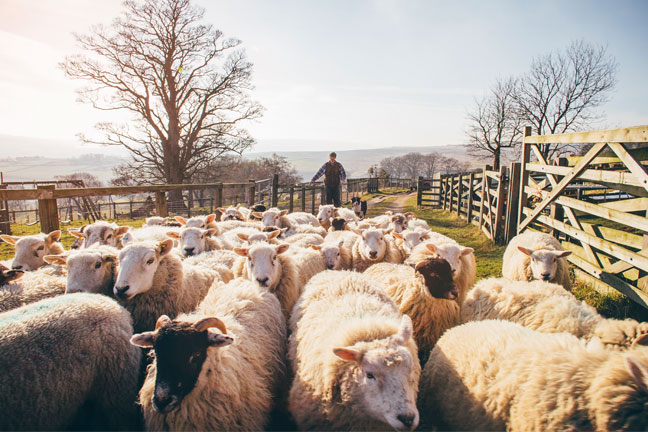May 4, 2023
Waste wool to be combined with hemp to create high-performance yarns
There are more than 80,000 sheep and lambs living on over 2,000 farms in New York State. Their wool has many uses including clothing, carpets, furniture, bedding, insulators, fertilizers, and more. However, about 10-15% of wool is wasted during the sorting and cleaning processes. Researchers from Rensselaer Polytechnic Institute are aiming to turn that waste into a new profit source for farmers, and produce an eco-conscious, high-performance yarn in the process.
Thanks to a $100,000 grant from the New York Farm Viability Institute, the research team will combine waste wool with hemp and incorporate artificial spider silk to produce a superior yarn with widespread applications. The Rensselaer researchers will collaborate with State University of New York at Morrisville, Battenkill Fibers Carding and Spinning Mill in Greenwich, and Propel, LLC to demonstrate a profitable and verifiable pathway for New York farmers to get their hemp and wool into high-value products.
Hemp is a naturally pest-resistant, high-yield crop that produces durable, long-lasting, and sustainable textiles, with about 700 growers statewide.
“Hemp and flax are considered two of the most durable fibers, but you can grow three times as much hemp as flax on the same amount of land,” explains Dan Walczyk, professor of mechanical engineering and director of the Manufacturing Innovation Center. “Another benefit is that hemp consumes about three times as much carbon dioxide per acre as flax.”
Infusing the wool/hemp combination with artificial spider silk will impart increased strength and resilience to the fiber. Helen Zha, assistant professor in the Isermann Department of Chemical and Biological Engineering, and Matteos Koffas, Dorothy and Fred Chau ʼ71 Career Development Constellation Professor in Biocatalysis and Metabolic Engineering, engineer microorganisms that produce artificial silk proteins.
“Pound for pound, silk can be stronger than steel and tougher than Kevlar,” said Zha. “Using engineered microorganisms to create well-defined recombinant silk fibroin-like proteins allows flexibility and scalability while benefiting from the advantageous features of natural silk.”
“We will ultimately produce yarns with enhanced mechanical performance, flame retardancy, luster, and lux hand feel,” said Koffas.
Walczyk and Johnson Samuel, associate professor of mechanical, aerospace, and nuclear engineering, will develop new manufacturing processes for the fibers. On top of producing a superior product, the research will prove market viability to producers and manufacturers.
“Farmers will not grow hemp without a market and guaranteed return on investment,” said Samuel. “Plus, potential manufacturers will not use hemp or hemp/wool yarns without guaranteed material specifications and a supply chain. Our research will overcome these obstacles.”
The state of New York is uniquely positioned for this project. First, the team will partner with seven farmers across the state to produce hemp and wool. Second, they will take advantage of a patent-pending automatic decorticator that separates fiber from hurd in a stalk of hemp without damage that was produced at Rensselaer. Third, as previously mentioned, the project will involve an infusion of artificial spider silk engineered at Rensselaer. Finally, New York has one of the very few carding and spinning mills in the United States that produces worsted-spun yarn: Battenkill Fibers, which will prepare the wool for processing.
Mary Jeanne Packer, president and founder of Battenkill Fibers, said, “There’s really nowhere else in the United States besides New York’s Hudson Valley where sustainably producing farm to fashion textiles is a possibility. We are all truly in a unique position to bring great benefit to our state’s farmers, designers, and manufacturers through the results of this project.”
Ultimately, the project will inform the agricultural community and the New York State government on how to support and establish this new agricultural market.
“While industrial hemp grown for fiber has many uses, New York’s farmers will need a market they can count on before growing substantial amounts of the crop,” said New York State Assemblywoman Donna Lupardo, chair of the Assembly Committee on Agriculture. “RPI’s pioneering research and development in this area is yielding promising results for both textiles and building materials. Combining waste wool with hemp to create stronger, sustainable yarn will allow farmers to diversify their crops, while meeting the increasing consumer demand for more eco-friendly products. I applaud their efforts.”
“I am delighted that top engineers from different disciplines are working together with local farmers and industry to bring economic and environmental benefits to New York state,” said Shekhar Garde, dean of Rensselaer’s School of Engineering. “Ultimately, we will all benefit from a superior product.”

